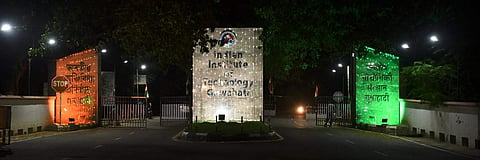

The Indian Institute of Technology (IIT), Guwahati researchers are exploring novel methods to finetune perovskite nanocrystals for optoelectronics applications. Optoelectronics (or optronics) is the study and application of electronic devices and systems that find, detect and control light, usually considered a sub-field of photonics. The officials of the Indian Institute of Technology have stated that there is research going on extensively all over the world in developing materials for use in solar cells and light-emitting devices, stated a report by PTI.
The PTI report also stated that with the world developing materials for use in solar cells and light-emitting devices, the most commonly used ingredient is perovskites. Perovskite is a material that has the same crystal structure as the mineral calcium titanium oxide, the first-discovered perovskite crystal. The crystals are in particular being extensively explored because of their specific optoelectronic properties such as tunable bandgaps, narrow emission, and strong light-absorption coefficients.
The ongoing research has also been published in Chemistry-A European Journal. "Despite the promise, the use of perovskite nanocrystals in solar cells and light-emitting applications has been hindered by their poor stability in air and moisture. While many research groups have been working towards overcoming the water sensitivity of perovskite nanocrystals, we studied ways in which water sensitivity can be used constructively," said Tushar Debnath, Ramanujan faculty, Centre for Nanotechnology, IIT Guwahati.
"The team capitalised on the highly ionic nature of the perovskite crystal structure to engineer water-triggered chemical transformation to produce stable and bright PNCs. They have reviewed earlier research on interfacial chemistry between aqueous and non-aqueous phases and the effects of doping on the interaction between water and the perovskite nanocrystals," he added, as reported by PTI.
The facility from the Centre for Nanotechnology, IIT Guwahati also explained that the reviews show that water can be good for perovskite crystals if it is utilised properly. This will lead to the development of several engineered structures. The researchers have also proposed an approach that will be triggered with water that can be easily extended to tailor many perovskites with different compositions and to make several perovskite heterostructures as reported by PTI.
